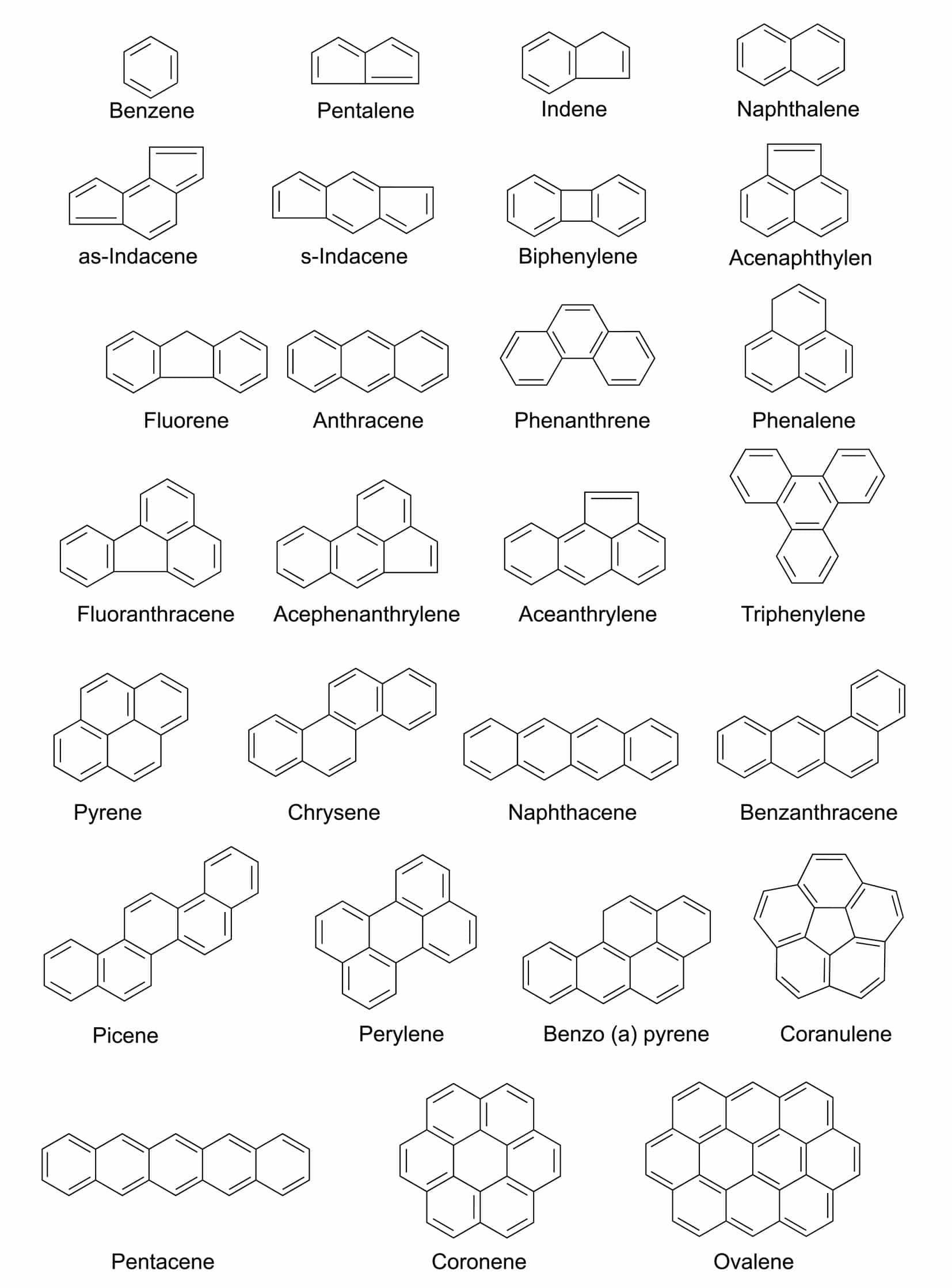PAHS

PAH is the abbreviation for polycyclic aromatic hydrocarbons. These are organic compounds consisting of two to seven rings of carbon and hydrogen atoms. At room temperature, these PAHs (polycyclic aromatic hydrocarbons) are solid; they bind very strongly to dust, soot, or soil particles. The exact properties of the different types always depend on the respective number of hydrocarbon rings. In principle, however, it can be said that PAHs (polycyclic aromatic hydrocarbons) are lipophilic, i.e., they are very soluble in fats and oil, but poorly soluble in water. The more hydrocarbon rings the individual PAHs have, the more fat-soluble the compound is. However, as fat solubility increases, so does the risk of PAHs (polycyclic aromatic hydrocarbons) to accumulate in the fatty tissue of organisms.
PAHs (polycyclic aromatic hydrocarbons): dangerous pathogens
PAHs (polycyclic aromatic hydrocarbons) are a worrying group of substances not only for us humans, but for all organisms in general. Many of these substances have carcinogenic, mutagenic and reprotoxic properties.
Independent studies repeatedly show elevated levels in a wide variety of consumer products. Shoes such as low-quality bathing slippers, tool, and bicycle handles, but also sports articles are among them. Plasticiser oils, which are supposed to ensure the best possible elasticity in the products, are responsible for this. Brittle plastic becomes pliable and supple with these plasticisers. Plasticiser oils containing PAHs (polycyclic aromatic hydrocarbons) are extremely cheap on the market and are therefore mainly used for corresponding cheap products. There are now various limit values for PAHs (polycyclic aromatic hydrocarbons). According to the Drinking Water Ordinance, the limit for drinking water is 10.0 nanograms per litre for benzo[a]pyrene, for example. For toys, the limit for each of the eight PAHs (polycyclic aromatic hydrocarbons) classified as particularly carcinogenic is 100 milligrams per kilogram. The use of PAHs (polycyclic aromatic hydrocarbons) is generally prohibited in cosmetics. However, this does not mean that the substances cannot nevertheless sneak into various cosmetic products in an insidious way. However, this process takes place very insidiously and via detours. Since the substances bind to dust or soot particles and remain there for a very long time, transfer via the atmosphere is not uncommon. They are deposited in soils, plants and on surfaces and enter products in this way. Before PAHs (polycyclic aromatic hydrocarbons) have a carcinogenic or cancer-causing effect in the human body, they must be metabolically transformed in the organism. This is the case for most carcinogens.
PAHs (polycyclic aromatic hydrocarbons) are formed in industry during the combustion of organic materials such as heating oil, coal, tobacco ,and fuel. The extraction of coke and gas from hard coal is considered particularly problematic in this context. However, PAHs (polycyclic aromatic hydrocarbons) also occur in nature. They are produced by microorganisms, fungi, plants, and animals, and are sometimes also produced by forest fires.
Some time ago, Stiftung Warentest found out that these substances can also be found in food. Various types of tea were particularly conspicuous, but the test institute classified the values as “less critical”.
PAHs (polycyclic aromatic hydrocarbons) can be detected in the human body with a so-called lymphocyte transformation test. However, this requires complex laboratory analyses. Ingestion cannot be completely prevented. People absorb these substances every day through the air, skin, and food. Even skin contact with contaminated bathing shoes can lead to contamination. However, the risk of increased intake can be significantly reduced. Consumers should generally avoid buying low-quality cheap products made of rubber, plastic and caoutchouc. When purchasing cosmetics, it is also important to use high-quality products; ideally, these should always be natural cosmetics. The most dangerous of these substances include benz[a]anthracene, benzo[a]pyrene, benzo[j]fluoranthene, chrysene and naphthalene.
Conclusion: PAHs (polycyclic aromatic hydrocarbons), the insidious poison in our bodies
PAHs (polycyclic aromatic hydrocarbons) permanently damage DNA and can cause cancer. The substances can be detected in our entire atmosphere, but the levels are especially critical when products containing the dangerous softening oils are bought and used. Cosmetic products should also always be of very high quality. In principle, the use of PAHs (polycyclic aromatic hydrocarbons) in cosmetics is prohibited, but absorption through the skin cannot be completely ruled out. However, those who rely on certified natural cosmetics from Cosmacon are always on the safe side.